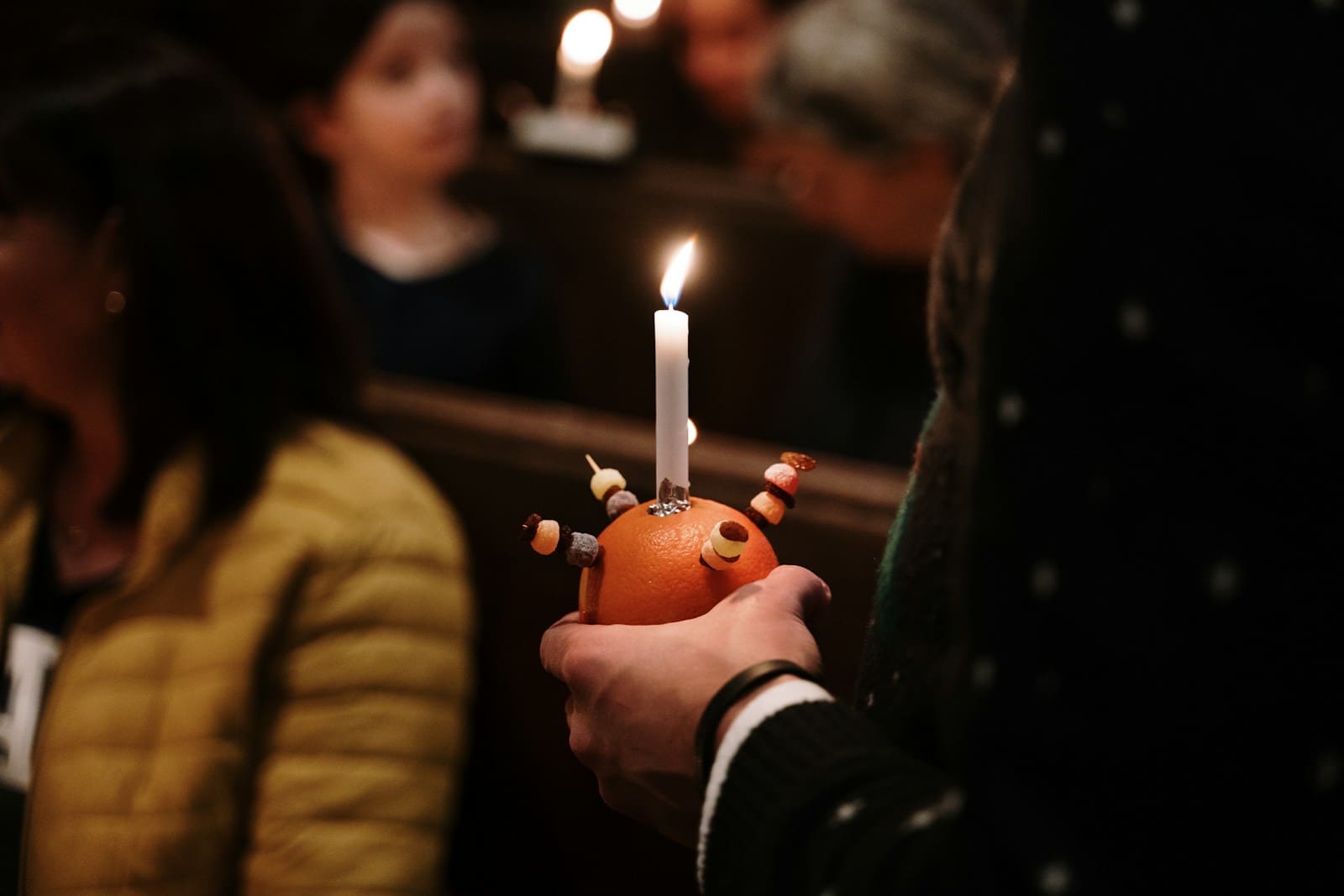Christingles Service History
Origins of Christingles
- Historical Roots in Europe: The Christingles service traces its origins to 18th-century Germany when a Moravian bishop named John de Watteville created the first Christingle. The word “Christingle” itself is a combination of two German words, “Christ” (meaning Christ) and “Ingle” (meaning light or fire). Initially, the Christingle was a simple way to teach children about the message of Christmas.
- Evolution of the Christingles Service: Over time, the Christingles service spread beyond Germany and gained popularity in other European countries. It became especially associated with Christmas Eve and evolved into a symbolic ritual within various Christian denominations. The service found its way into churches, schools, and community gatherings, becoming a cherished part of the Christmas traditions in many regions.
Symbolism of Christingles
- Significance of the Orange: The orange used in the Christingle holds multiple symbolic meanings. First, the orange represents the Earth, signifying God’s creation. The orange also serves as a reminder of the fragility of the world and humanity’s responsibility to care for it. Additionally, the orange is associated with the fruit of the Garden of Eden, emphasizing themes of redemption and renewal.
- Candle Symbolism: The candle placed in the center of the Christingle represents Jesus Christ as the Light of the World. Lighting the candle during the service symbolizes the spreading of Christ’s light and the dispelling of darkness. The flame also signifies hope and the presence of Christ in the hearts of believers.
- Use of Red Ribbon and Sweets: The red ribbon encircling the orange symbolizes the blood of Christ, highlighting the sacrificial aspect of Jesus’ death on the cross. This serves as a visual representation of the redemption and salvation brought by Christ. Sweets or dried fruits skewered onto the four sticks signify the sweetness of God’s love and the bountiful gifts of the Earth. Together, these elements create a visually impactful representation of key Christian teachings during the Christingles service.

Christmas Traditions
Evolution of Christmas Celebrations
- Historical Background: Christmas celebrations have deep historical roots, dating back to ancient times. The festival originally had pagan origins, with the Romans celebrating Saturnalia, a winter solstice festival, and the Germanic peoples observing Yule. The Christianization of these festivities led to the establishment of Christmas as a Christian holiday.
- Incorporation of Various Cultural Elements: Over the centuries, Christmas celebrations evolved and absorbed diverse cultural elements. For example, during the medieval period, Christmas festivities incorporated elements of the Feast of Fools, characterized by revelry and comedic events. The Renaissance saw the emergence of Christmas carols, contributing to the musical aspect of the holiday. Additionally, the Victorian era played a crucial role in popularizing many aspects of the modern Christmas celebration, such as the Christmas tree and gift-giving traditions.
Traditional Christmas Symbols
- Christmas Tree: The Christmas tree has become a ubiquitous symbol of the holiday season. Originating in Germany, the tradition of decorating evergreen trees gained popularity during the 19th century. The use of ornaments, lights, and tinsel symbolizes the festive spirit. The Christmas tree represents life and renewal, and its adoption spread globally, becoming a central element of Christmas traditions.
- Santa Claus: The modern image of Santa Claus has evolved from various cultural influences. The character finds its roots in the legendary figure of Saint Nicholas, a Christian bishop known for his generosity. The Dutch Sinterklaas traditions also played a role, and the 1823 poem “A Visit from St. Nicholas” (commonly known as “The Night Before Christmas”) solidified the image of Santa as a jolly, gift-bringing figure.
- Nativity Scenes: Nativity scenes depict the birth of Jesus Christ and are a central focus of Christmas celebrations in Christian communities. The scenes include figurines of Mary, Joseph, the baby Jesus, angels, shepherds, and the Wise Men. Displayed in homes, churches, and public spaces, nativity scenes serve as a visual representation of the religious significance of Christmas.
Modern Christmas Practices
- Gift-Giving Traditions: The tradition of exchanging gifts during Christmas has ancient roots, symbolizing the gifts presented to Jesus by the Wise Men. In modern times, gift-giving has become a central and commercialized aspect of Christmas celebrations. Families and friends exchange presents as a gesture of love and generosity, contributing to the festive atmosphere.
- Christmas Feasts and Meals: Christmas is associated with special meals and feasts, bringing families and communities together. Traditional dishes vary globally but commonly include roasted meats, festive desserts, and special treats. The Christmas feast serves as a time for joyous gatherings and shared meals, reinforcing the spirit of togetherness during the holiday season.
- Community Events and Festivities: Beyond individual celebrations, Christmas is marked by various community events and festivities. Parades, tree lighting ceremonies, and holiday markets contribute to the communal spirit. Carol singing, live performances, and charitable activities also play a role in fostering a sense of unity and goodwill within communities during the Christmas season.

References



